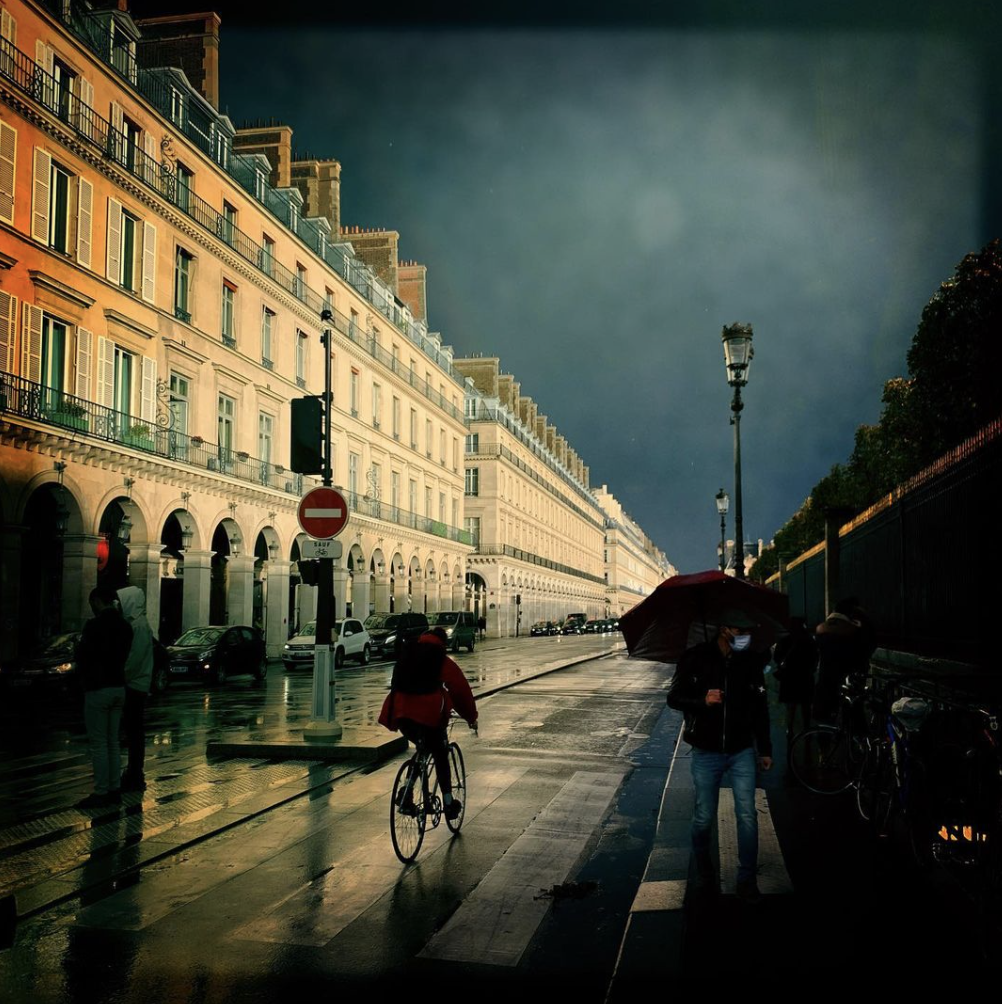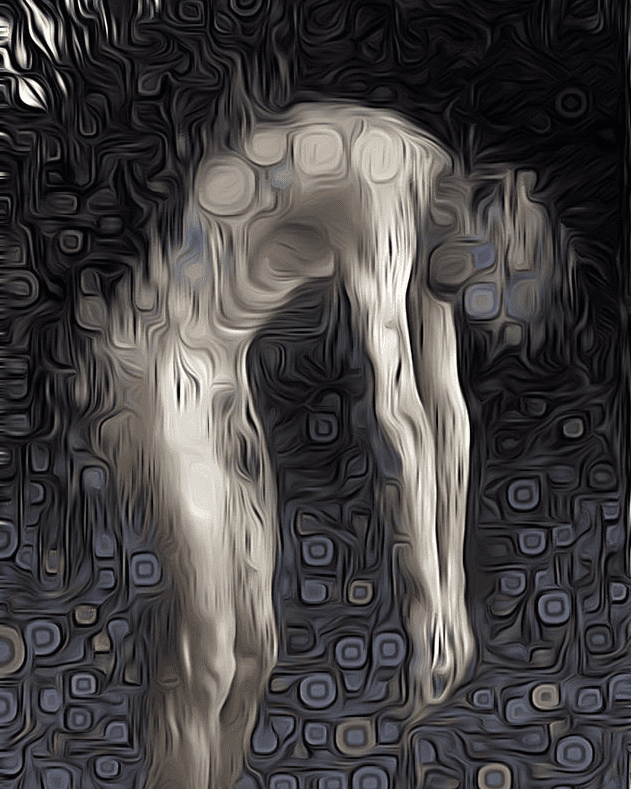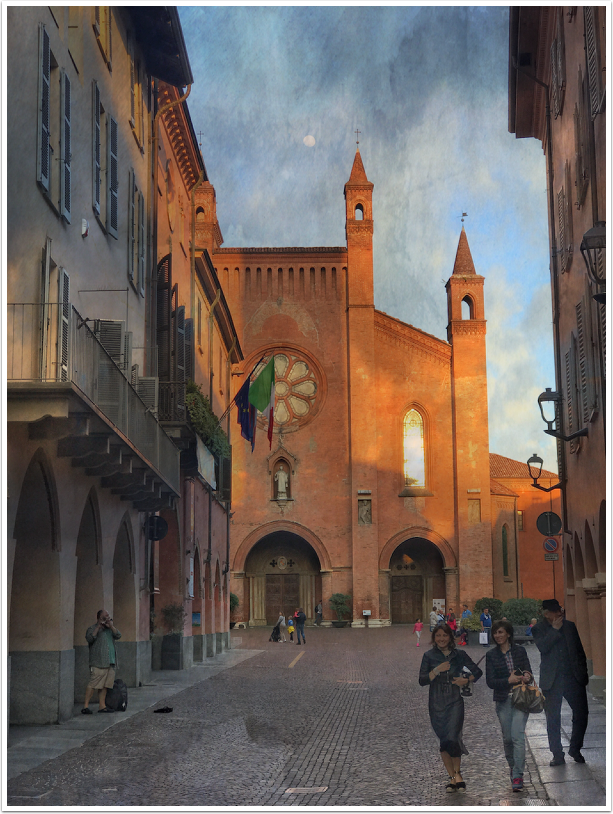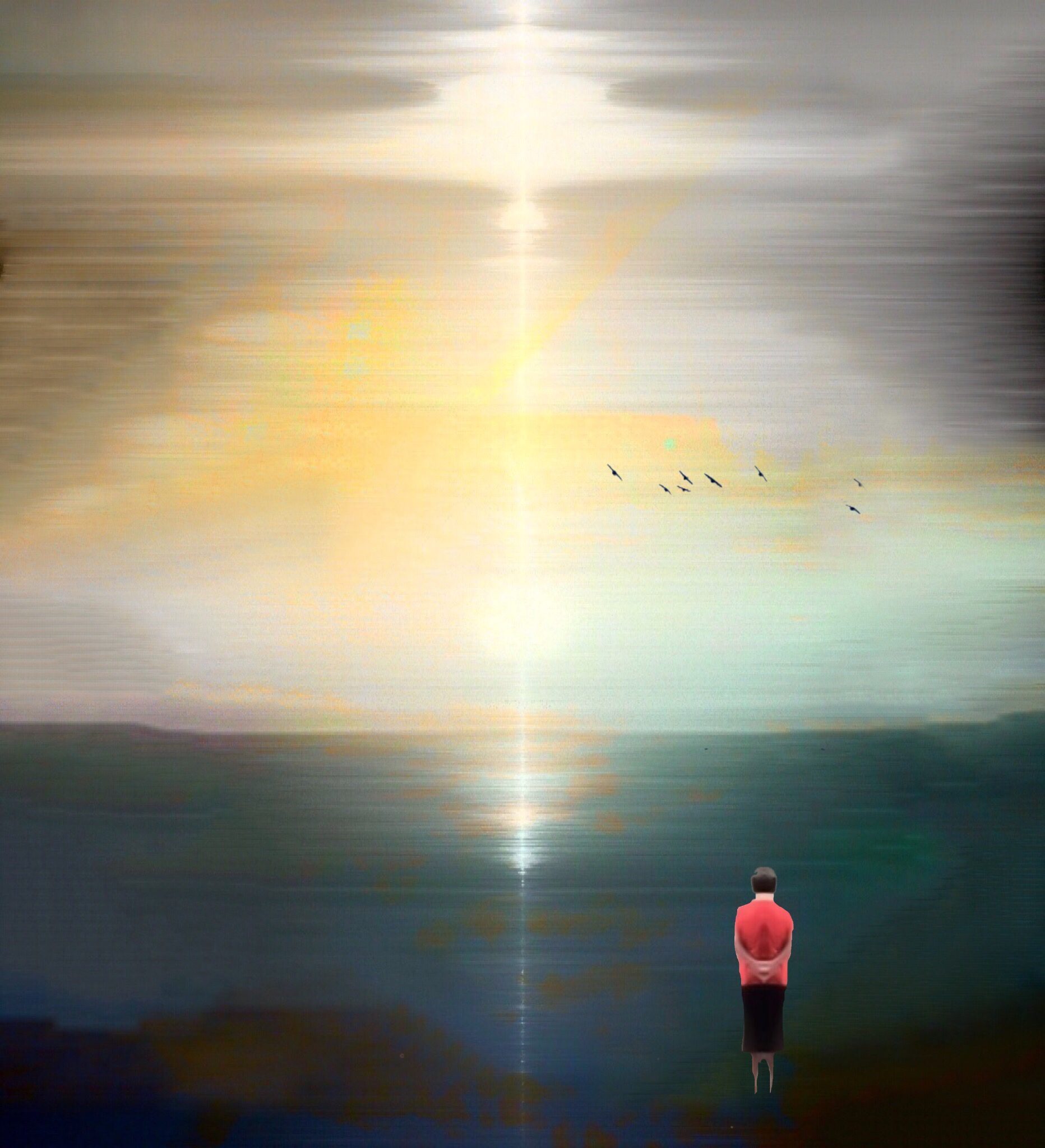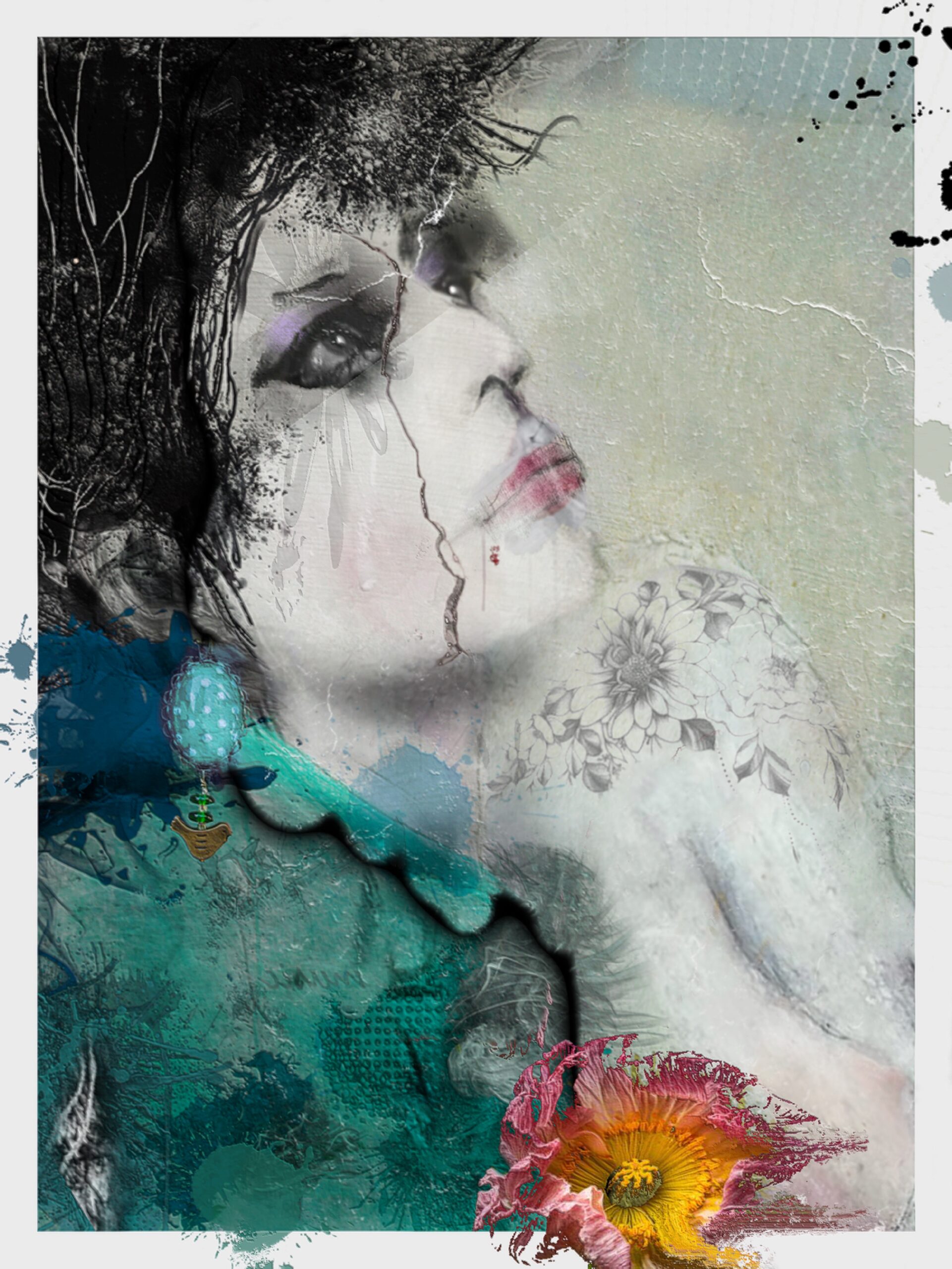
Mobile Artists on Their Artistry – Interview with Peter Wilkin from North Yorkshire, England, UK
We are delighted to publish the ninth of our new styled interview entitled ‘Mobile Artists on Their Artistry’. Within this interview, we ask highly successful mobile artists twenty questions about their backgrounds, their work, social media, how Covid-19 has influenced their creative life and so much more…
Today, we are proud to feature our latest interview, this time, with award winning artist, Peter Wilkin from North Yorkshire, England. To have someone interpret our story, to know what we’ve endured, experienced, sustained and to vocalise it back to us, is what we all most long for. Peter Wilkin’s art meets us at this level, perhaps offering the ultimate allure, to have our own story retold to us. Yearning, moribund, caring, all brush up against each other in this selection of art, you can edge right up to it, be captivated, with another, through another, into the purest vestal from where we came.
Wilkin’s previous occupation as a psychotherapist has much to do with his understanding of our needs to be understood. His art radiates and throbs off the page, each one suggestive of another outcome, if the viewer approaches the art with inner knowledge, then they will bask in a sort of awakening, a path, on which to return and reel from the bliss.
We are also proud to offer a collection of his work for sale in our exclusive online gallery, please take a look here.
To read our other interviews in this series with Jane Schultz, Susan Latty, Cindy Karp, Sukru Mehmet Omur, Deborah Kleven Morbeto, Patty Larson, Adrian McGarry and Catherine Caddigan, please go here.
How would you introduce yourself to someone who doesn’t know your work?
Virtually all my images begin life as a photograph taken with my iPhone. My portraits are usually of close family members & my landscapes/seascapes are taken predominantly in Yorkshire or across the border in Scotland.
Once I have my initial photograph I transfer the image onto my iPad & begin to edit, using a selection of apps to achieve the effects I’m looking for. My portraits/human figure work are often driven along by either song lyrics or a piece of poetry, which is reflected in the title of the work. Alternatively, inspiration is sometimes generated by an issue that arouses strong feelings within me.
Whilst the process itself is fairly technical it is balanced by periods of unconscious creativity; best described, perhaps, as a willingness to hand over the ‘brushes’ to my inner child. In these interludes of free play my imagination runs riot & the art becomes a fusion of honesty, curiosity & adventure. The finished image is a visual representation of my understanding & interpretation of the subject matter.

What name do you use within social media and was this a conscious decision?
@peterwilkin1 … it’s who I am.

What kind of family did you grow up in?
I was the only child in a working class family. My dad worked as a carder in a wool mill & my mum did sewing from home. They were both very kind people & I was shown a lot of love. I was never lonely & used to spend hours playing, writing & reading on my own. I still have a treasured photograph of my dad sitting on our back door step with me on his knee. Hanging on the wall beside us is a large tin bath that he’d bring into the house & place in front of a roaring coal fire every Friday. My mother would boil several kettles of water on the stove & pour them in, before cooling it with jugs of cold water. It was a very slow process. On every other day she would sit me on the draining board by the sink & give me an ‘all over wash’.

Did your childhood influence your ideas about creativity?
Yes, I would say so. I was encouraged to create by my mother, who was very creative herself & an accomplished painter. My father was very good with his hands &, in his later life, took up pottery. Being an only child meant I often had to think creatively in order to amuse myself. I would draw & paint a lot, winning several local art competitions. Since as far back as I can remember, I’ve been driven to create & achieve. I’ve never felt able to sit around & do nothing.

Did your parents support your creativity?
They did indeed, particularly my mother. As I mentioned earlier, she was an artist & also a musician. My father played the euphonium in a brass band. I was always encouraged to express myself both artistically & through the written word.

When was the first time you knew you wanted to be an artist?
I don’t think I ever wanted to be an artist ~ it just seemed to happen. I studied photography in the late 70’s/early 80’s but gradually moved away from it soon after I became a student psychiatric nurse. After I retired I focused on writing poetry & co-wrote a children’s book about dragons that still sells the odd copy. In 2013 I acquired my first iPhone & soon became aware of the camera & the phone’s editing potential. I played around with it for a while & then life events took over. It was 2017 before I really had the space to explore the available apps & create images. After twelve months or so I gradually realised & started to accept that I had become an artist.

What is creativity to you?
For me, creativity involves a desire to produce something personal & original, followed by actions that result in an end product: an image, a poem, a piece of writing, a meal, a cake. It is the opposite of what I understand as compliance, which involves following instructions &/or adapting in order to fit in with someone else’s demands.
According to the psychoanalyst Donald Winnicott, creativity happens in the potential space between an individual & the environment. In its earliest form we experience it as an unconscious action that arises when the infant feels safe (emotionally held) enough to disengage from the ‘good-enough mother’ & follow his/her imagination. In this third space between self & mother/object, the infant falls naturally into a state of creative play.
It’s clear to me that I’m at my most creative when I lose sight of both my self & my surroundings. It is during these moments that I step into that space & really engage with the creative process. As Jane Schultz explains, it is then that we ‘Edit from our Soul.’

What did you do before (if appropriate) becoming an artist?
I had a lengthy & incredibly edifying & enjoyable career within the NHS, beginning as a student psychiatric nurse &, once qualified, training as a psychodynamic psychotherapist. I never moved away from clinical practice (although I did engage in some teaching practice at Manchester University) & I eventually took up post as a clinical nurse specialist in the Complex Cases Mental Health Team until I retired.

Where are you most creative?
Definitely in my study; my den! The initial photograph can be taken wherever but I would never dream of creating an image anywhere other than when I’m in my own special space.

What inspires you?
Most everything! Particularly feelings & emotions, often those generated by music, art & poetry ~ but also my beliefs, nature, people, colour, light & movement.

Who inspires you?
As an artist, many poets & many singers/instrumentalists: Keats, Cummings, Anne Sexton, Sinead Morrissey … Kate Bush, Peter Gabriel, Jeff Beck, John Martyn, Sting & lots more. Their works frequently nudge & inspire me to create art. I also gain a great deal of inspiration from other recognised photographers, such as Francesca Woodman & Cindy Sherman. Whilst undertaking my Masters degree in psychiatry & philosophy I encountered many influential academics, none more so than the Algerian feminist & philosopher Hélène Cixous. Her strategy of ‘écriture feminine’ has influenced & shaped a number of my pieces.
As for the mobile artists who have influenced me there are so many; too many to mention here … so I will mention just one. Since I stepped into our community Jane Schultz has blown me away with her art & been a constant inspiration to me. I have considered her to be my mentor for some time now & we have also developed a wonderful friendship. She has taught me so much, not just from a technical point of view but, most importantly, how to create art from my soul. That, I think, more than anything, is responsible for the art that I create.

Does your engagement on social media help you to plan your future projects?
Yes, not always but certainly on occasions. I do enjoy some of the art challenges set on social media & certain posted images (not just mobile art but all other forms of art) by a variety of artists fire my imagination & often inspire me to begin a new piece of art.

What does your average day look like?
It inevitably begins with coffee in bed & a leisurely browse through social media & the previous evenings football results. Bedtime begins with a mug of cocoa & two fig biscuits to dunk in (I’m old & a creature of habit; some may say a tad obsessional, too). Otherwise there is no real average as such. We could be talking an epiphany whilst walking in the rain on the local moors or a trip to Aldi! Or even an epiphany in Aldi! Having said that, there is a daily constant in that a day rarely goes by without me thinking about, viewing & often creating mobile art.

Is it your intention to ask questions or make the viewer question what they see?
I guess all my images have an agenda, usually a conscious one but no doubt there are unconscious particles present in each piece. I don’t really set out to ask specific questions but I always hope that the viewer will connect with my art enough to formulate an opinion about it.
My most recent image was inspired by a combination of the current season we are in & the colours associated with that season. I called the piece ‘October’, inspired by the U2 song with the same title. The lyrics carry the Group members’ conflict between their Christian faith & their identity as a group of musicians worshipped worldwide. Yet the poem ‘Love’ by Carol Ann Duffy also came to mind. This beautiful poem also compares facets of nature together, whilst addressing the potential conflicts within any loving relationship. Though greatly inspired by both the lyrics & the poetry, I tried to allow the image to surface in its own time & way. In fact, for the very first time I began the piece by sketching the woman’s face in Procreate & then adding bits of photographs as layers. My intention was to use the natural colours we might find in the month of October to carry the image; to highlight the contradictions that we see as the beauty of dying manifests all around us.
When I posted the image on Facebook it was well received ~ but one comment, posted by a member of our art community whose work I really do adore, puzzled me.
“This is Autumn not Fall’, she wrote. Just those five words. I found her comment fascinating & asked her to elaborate, which she kindly did thus: “I think of fall as a calendar season. Regular photos of leaves falling, gourds and squash, no Halloween. Autumn is moodier, dream laden with skies darker, Jack ‘o’ Lanterns not pumpkins & expectations. It’s the only season with two names for good reason.”
So not only did this person question what she saw, she offered a comparison & an interpretation that hadn’t occurred to me. I was so pleased that I’d asked her to elaborate. In a nutshell, I’m a great believer in Roland Barthe’s hypothesis re the death of any ‘author’, in that ‘the key to a text (piece of art) is not to be found in its origin but in its destination … the birth of the reader (viewer) must be at the cost of the death of the author (artist).”

Is there humour in your work?
In some pieces, yes. I do sometimes try to amuse people through my art. My image ’Sisterhood’ provides an example.

How important is failure in your work process? Do you incorporate it into your creative process?
There are times when an image I’m creating hits a brick wall. I can’t deny a feeling of frustration when this happens but I don’t see it as failure. I don’t delete the image; I merely move on & come back to it hours, days, maybe even weeks later. And when I do, what I usually find is that I’d been focusing too much on the technicalities of editing & not following my intuition ~ trying to manipulate the image instead of allowing it to ‘become’. Such insights inevitably cause me to think differently about the image (perhaps take it back to a much earlier stage in the editing process), enabling me to reconnect with it at a deeper level & bring it to a satisfactory conclusion.

How do you deal with criticism?
Sadly, I very rarely receive it. I would love to be part of a group where constructive criticism was offered by other mobile artists.

Has the Covid-19 pandemic influenced your creative life?
It has, I actually created a series based on the effects of Covid. Its perceived impact on the world has crept into other pieces I’ve created in more subtle ways, for instance how it’s changed our routines. My image ‘Outside the butcher’s shop’ illustrates this well, showing a queue of people standing in the snow outside our local butcher’s shop, with one person suddenly becoming so exasperated that she verbally expressed her frustration before striding off to buy her meat elsewhere.

Who dead or alive would you like to have dinner with?
It would make good sense to invite a chef so I’m going with Keith Floyd; such a flamboyant character & a great cook. Who else? Almost impossible to decide but I’m going with Bob Dylan, Dylan Thomas, Tracy Emin, the psychotherapist Bob Hobson & you, Joanne, at the head of the table
And let’s invite Annie Leibovitz for the photos & how about Kate Bush to sing a song or two for us?

What is the best piece of advice that you’ve heard and still repeat to others?
When faced with a situation where the outcome was either difficult or impossible to predict, my father would always sigh, pause & then respond with, “Well lad, it’ll either rain or go dark before morning!” I must have repeated these words a thousand times & more after eventually realising what he meant by them.

Please help…
TheAppWhisperer has always had a dual mission: to promote the most talented mobile artists of the day and to support ambitious, inquisitive viewers the world over. As the years pass TheAppWhisperer has gained readers and viewers and found new venues for that exchange. All this work thrives with the support of our community.
Please consider making a donation to TheAppWhisperer because your support helps protect our independence and it means we can keep delivering the promotion of mobile artists that’s open for everyone around the world. Every contribution, however big or small, is so valuable for our future.
